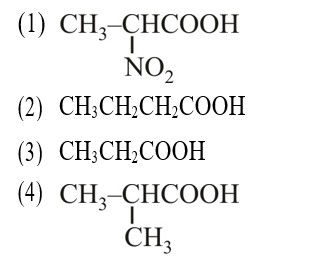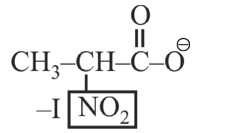Match the pollutant(s) in Column I with the effect(s) in Column II.
Column I
Column II
(i) Oxides of sulphur
(a) Global warming
(ii) Nitrogen dioxide
(b) Damage to kidney
(iii) Carbon dioxide
(c) ‘Blue baby’ syndrome
(iv) Nitrate in drinking water
(d) Respiratory diseases
(v) Lead
(e) Red haze in traffic and congested areas.
Match the pollutant(s) in Column I with the effect(s) in Column II.
|
Column I |
Column II |
|
(i) Oxides of sulphur |
(a) Global warming |
|
(ii) Nitrogen dioxide |
(b) Damage to kidney |
|
(iii) Carbon dioxide |
(c) ‘Blue baby’ syndrome |
|
(iv) Nitrate in drinking water |
(d) Respiratory diseases |
|
(v) Lead |
(e) Red haze in traffic and congested areas. |
-
1 Answer
-
This is a Matching Type Questions as classified in NCERT Exemplar
(i)→ (d); (ii)→ (e); (iii)→ (a); (iv)→ (c) ; (v)→ (b)
Similar Questions for you
–I effect ∝ Acidic strength
+I effect ∝ Basic strength
* Most stable anion due to maximum –I effect.
* Most acidic
with increase in separation of screen from slits plane, fringe width increases.
Excessive nitrate in drinking water causes methemoglobinemia
Excessive nitrate in drinking water causes methemoglobinemia
Release of toxic/undesirable materials in the environment.
Taking an Exam? Selecting a College?
Get authentic answers from experts, students and alumni that you won't find anywhere else
Sign Up on ShikshaOn Shiksha, get access to
- 65k Colleges
- 1.2k Exams
- 679k Reviews
- 1800k Answers



